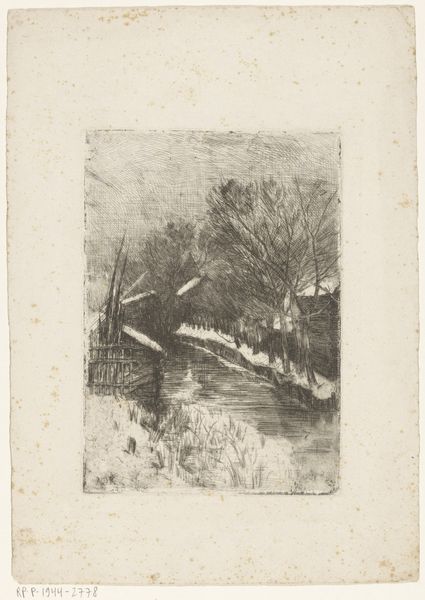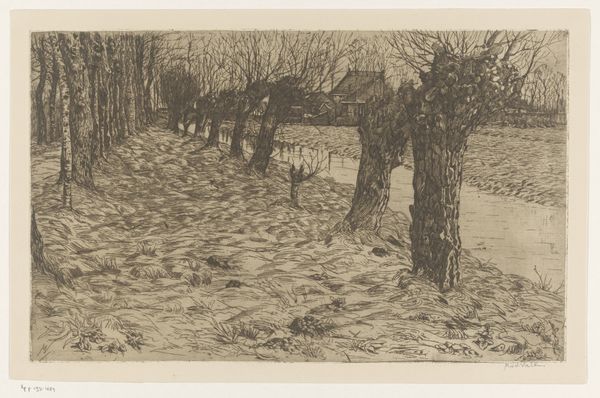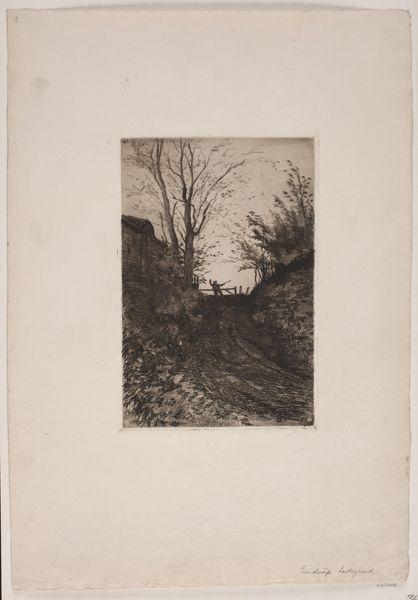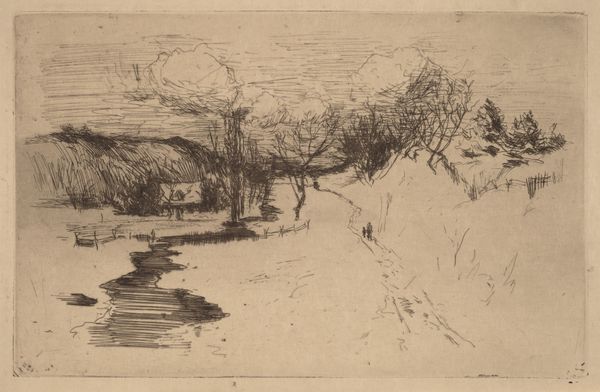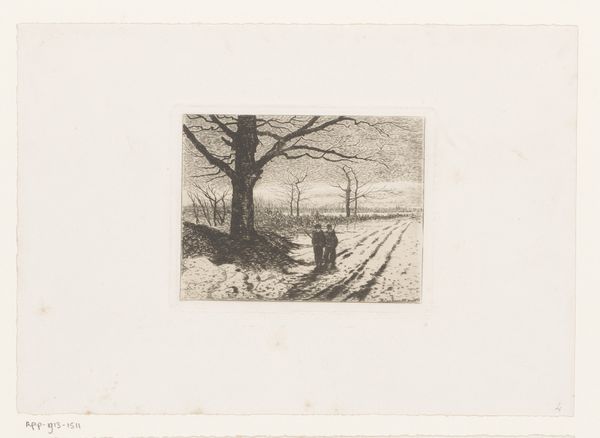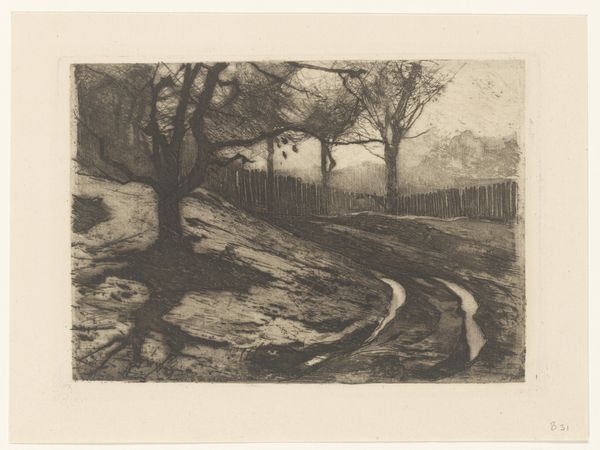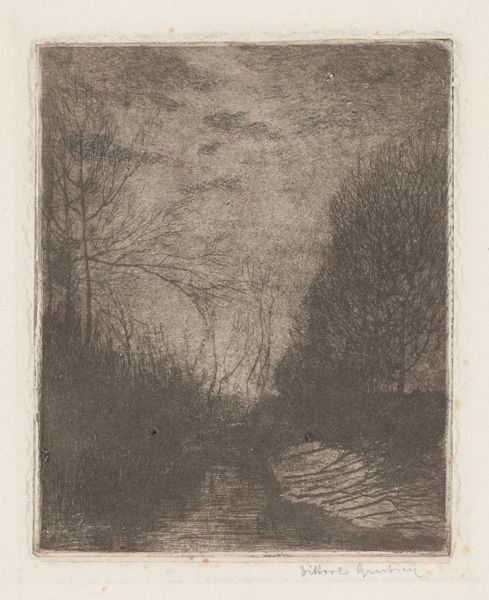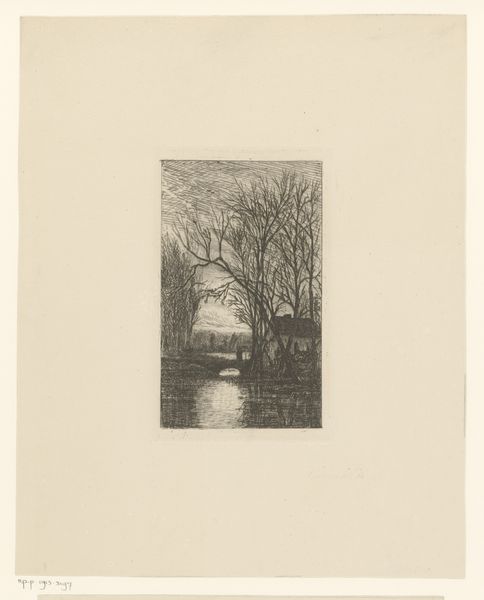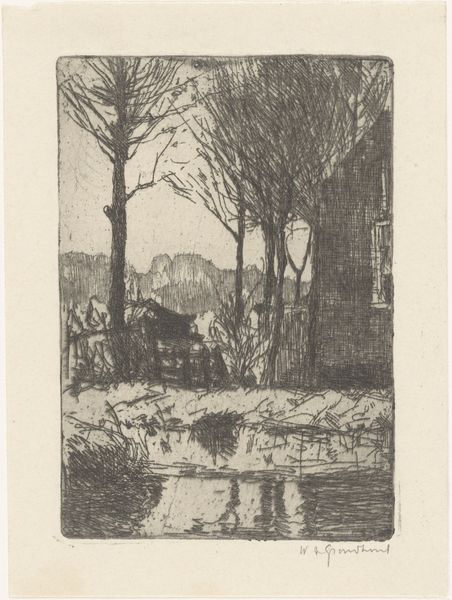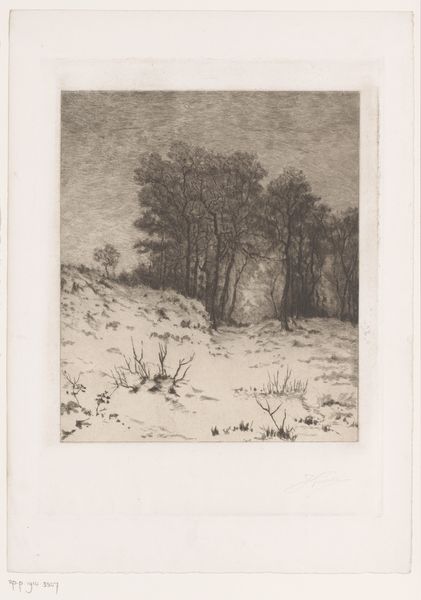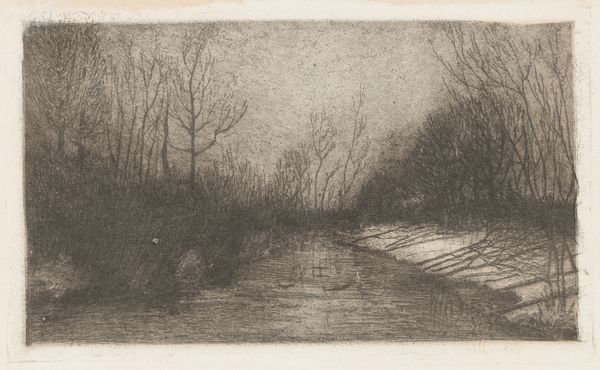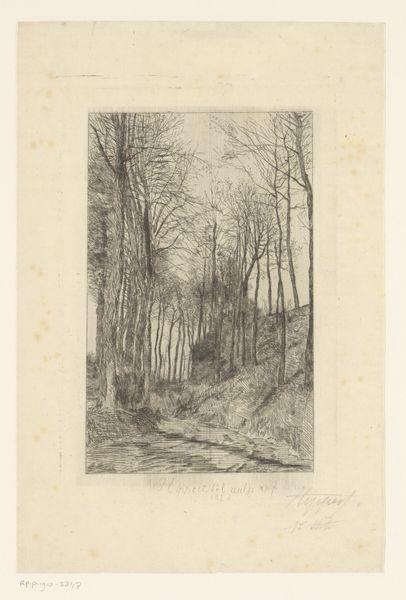
Dimensions: height 201 mm, width 140 mm
Copyright: Rijks Museum: Open Domain
Editor: So, here we have "Snowy Trees and Buildings Along a Ditch," an etching made sometime between 1869 and 1925 by Antoon Derkinderen. It feels incredibly stark. What stands out to you about this particular print? Curator: Immediately, I'm drawn to the *process* itself. Look at how the etching medium, with its inherent ability to create fine lines, serves the representation of winter. Think about the physical act of scratching into the metal plate to create this scene. How does the artist’s labor manifest in the final print? Editor: That's fascinating; I was just seeing a landscape! What does focusing on the process reveal about the social context? Curator: Well, etching allowed for reproducibility. Multiple impressions could be made, bringing art to a wider audience. It democratized landscape, didn't it? But, also consider the *materials* used: the metal plate, the acid, the paper. These weren’t universally accessible. Who controlled access to these means of artistic production at that time? Editor: That makes me think about the cost, who could afford it and access the art… Curator: Precisely! And think about the artist’s relationship to the landscape itself. Was Derkinderen depicting a scene from the life of a patron, perhaps? Or was it commentary about changes in land usage visible with industrialization and rising populaces? The raw materials and the resulting work are all interwoven within broader cultural circumstances. Editor: I never would have considered that. It seems that even in a quiet landscape, we can see production and social relations reflected in it. Thanks! Curator: My pleasure. Thinking about the social circumstances surrounding art can shed an entirely different light on its perceived value.
Comments
No comments
Be the first to comment and join the conversation on the ultimate creative platform.
